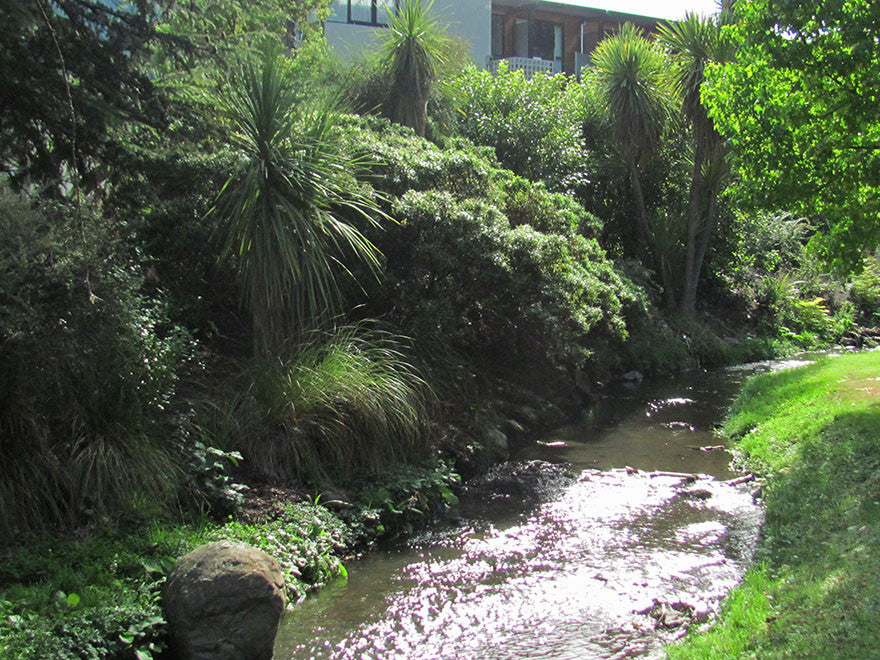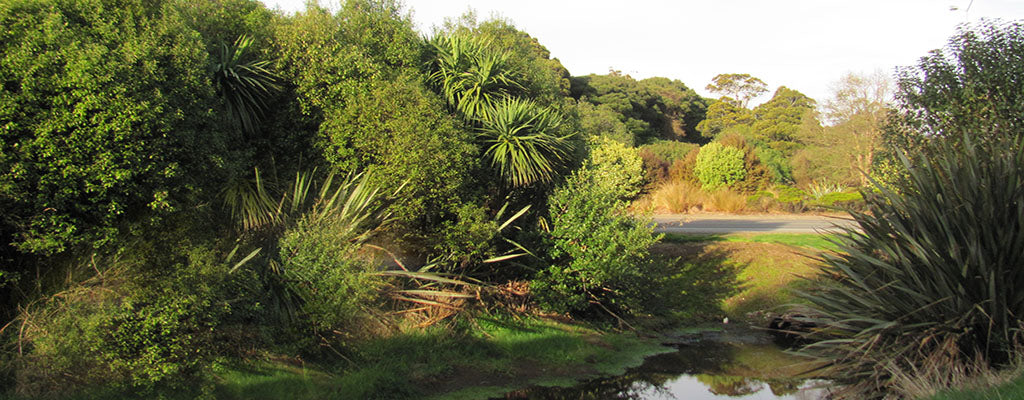Despatch from 5th Jan
Orders over $199
Despatch from 5th Jan
Orders over $199

Riparian margins are strips of land along the edges of natural watercourses including streams, lakes and wetlands. They are the transitional area from land to water. The planting of riparian zones plays an important role in protecting the environment, and these are increasingly becoming recognised as important areas to plant in natives.

The importance of restoring riparian zones is underestimated due to the relatively small size of the zone. Restoration of the riparian zone brings many benefits to the health of the waterway including, stabilising the banks, reducing erosion, pollution control and wildlife habitat. Add to this the huge aesthetic benefits of enhancing a waterway and the natural enhancement this brings to the landscape.

Native plants are perfect for planting riparian areas, because this is what naturally occurs in these areas. They are adapted to the climate, soils and other growing conditions. Not only are Native trees and shrubs perfect for wet areas they are ideal for beautification as they have a wide range of foliage, colours and textures. Utilising native plants for wet areas can help restore some of the natural character and species of the riparian area, and restore habitat for wildlife.
Planting natives on riparian margins starts a positive cycle of restoration for many forms of wildlife. Leaves and vegetation falling into the river boost the growth of aquatic algae and fungi, which in turn helps feed fish and insects. Trees provide shelter for fish and habitat for birds, fish, frogs and insects. Birds feed on frogs, and insects, and forage on mites and berries on trees and shrubs. Whitebait, fish frogs and eels thrive in a healthy waterway.

Intensive farming, forestry and run off from cityscapes all contribute to pollution in the waterway. Ungrazed, well planted riparian zones act as ‘filters’ which help settle out sediments for absorption into the soil. Riparian plants use some of the nutrients for growth. Most nitrates in riparian groundwater are returned to the atmosphere by the microbial process ‘denitrification.’

Of course your riparian zone must be fenced in order to start any planting project. Weed control is necessary and usually achieved through spraying. Organic sprays can be used if this is your preference. It is often preferred to spot spray circles where the plants will be rather than blanket spray the whole area. This means existing vegetation can shelter the plants, protect from rabbits etc, and makes maintenance much easier.
By spot spraying at 1m intervals you are also making it clear and easy for your planters as to where to plant.

Riparian plantings would include a large amount of smaller growing plants such as Tussocks, Grasses, Toe Toe & Flax. Riparian plantings should also have a reasonable number of trees & shrubs to shelter the waterway and provide safe haven for birds and other wildlife. Trees, shrubs and grasses greatly improve the stability of streambanks. Plants with flexible, multi-stemmed growth forms should be used on the margins, so they can withstand flooding.
Natives that are naturally suitable for waterway and riparian plantings include:

Of course there are many more natives suitable for riparian plantings, check out list of natives for riparian plantings, available now:
Shop natives suitable for riparian zones
On average native plants should be spaced at about 1 per square metre. For grasses and tussocks they would need to be closer together such as 2 per sqm, however this is balanced out by larger trees and shrubs being planted at about 2m intervals.
1 per sqm is a good rate to work at for a general guide.

If your plantings are well looked after for the initial establishment phase of 2-3 years they should be reasonably maintenance free after that. Depending on the challenges of your site you may have specific care needs for establishing your plants. These generally include:
Weed control - At least two 'release sprays' required per year.
Pest Control - Rabbits, hares, possums, deer and livestock can all be very problematic for your plants.
Irrigation - temporary irrigation might be necessary during the establishment phase. This can be costly so avoiding this through careful plant selection is preferred.


Leave a comment